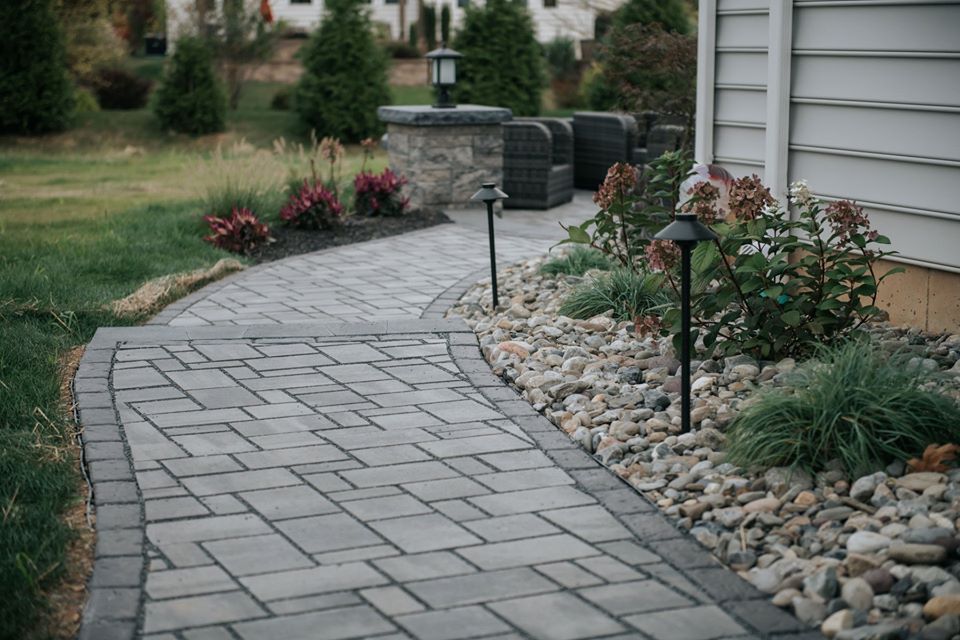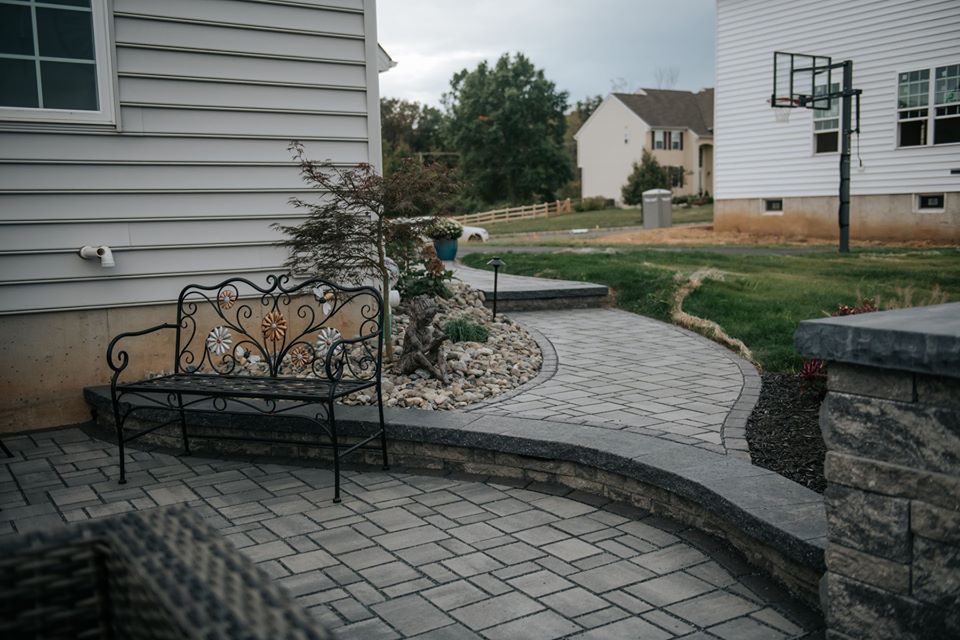
How does it work?
What are the benefits of having permeable pavers?
What type of permeable pavers are on the market?
● Permeable Concrete: These pavers are concrete and stones mixed. There is no gravel or sand used as a sub-base allowing the concrete to become more porous. Water does wear down the concrete making it more brittle and a rougher texture.
● Interlocking Concrete Brick Pavers: This consists of smaller bricks of concrete that allow small gaps to help the water drain. While the pavers themselves are not permeable, the area in between is what will catch the water. This system will wear down over time, however, losing its permeability.
● Porous Asphalt: To make asphalt permeable it needs to be laid on a stone storage bed. These stones give ample space for water to flow into the soil underneath. One drawback is that the asphalt will need frequent maintenance to fix potholes and cracks.


● Plastic Grid Pavers: This cellular plastic grid is filled with grass or gravel. It’s semi-flexible, allowing maximum permeability. This is best for areas that get a lot of traffic, especially for heavy-load vehicles.
● Rigid Plastic Pavers: These plastic pavers are designed to be more rigid and are often a hexagonal cell. Usually, you’ll see this filled with grass because of how stiff it is.
● Rolled Plastic Paving: This application is mostly for foot traffic and light loads. It’s very flexible because it’s easily rolled out and can work with either grass or gravel fillings.
